#Captive-active flight number 1A
Explore tagged Tumblr posts
Text

Space Shuttle Enterprise mated to 747 SCA #905 prior to her second manned-captive flight.
Date: June 23, 1977
Cliff Steenhoff's collection
NASA ID: EC77-7553
#ALT-9#Captive-active flight 1A#Captive-active flight number 1A#Approach and Landing Tests#Space Shuttle#Space Shuttle Enterprise#Enterprise#OV-101#Orbiter#NASA#Space Shuttle Program#Boeing 747 Shuttle Carrier Aircraft#Boeing 747 SCA#Boeing 747#747#Shuttle Carrier Aircraft#Dryden Flight Research Center#Edwards Air Force Base#California#June#1977#my post
59 notes
·
View notes
Text
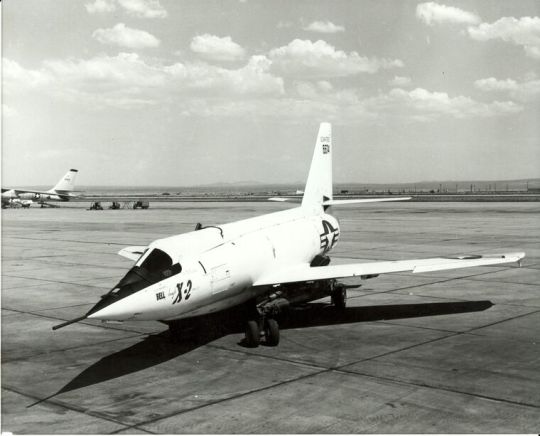
-A Bell X-2 at Edwards AFB. A Boeing B-47 is visible in the background. | Photo: NACA/USAF
FLIGHTLINE: 159 - BELL X-2 STARBURSTER
The X-2 was built to investigate the "thermal thicket" at speeds above Mach 2, but the two examples completed had a short service life.
Building on the work of the Bell X-1 and Douglas D-558 aircraft, the X-2 (nicknamed Starburster, though it was rarely used) was designed to explore speeds in excess of Mach 2. Engineer calculations, backed up by flights of the former aircraft, indicated the existence of a "thermal thicket"; that is: escalating aerodynamic heating as speeds increased. As a result, Bell devoted extensive time to development of advanced materials, aerodynamics, and control systems all with the goal of creating an aircraft capable of flying faster and higher than any human had done previously.

-Orthograph of the X-2. | Illustration: NASA-DFRC
The X-2 incorporated numerous advances over the X-1, including a swept wing and horizontal stabilizer. The airframe was built from K-Monel, an alloy of coper and nickel, as well as stainless steel. An XLR-25 two-chamber throttleable rocket motor provided 2,500 to 15,000 pounds of thrust, burning a mix of liquid oxygen and alcohol. The XLR-25, produced by Curtiss-Wright, was actually based on a WWII RATO bottle developed by Robert Goddard for the US Navy. The aircraft were designed with a skid rather than main landing wheels, though a nose gear was equipped, as well as skids on the wingtips.
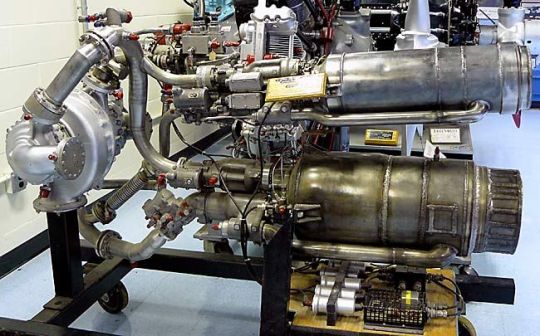
-An XLR-25 motor on display at the Aviation Hall of Fame in New Jersey. | Photo: Bill Maloney
In a worst-case scenario, the cockpit section of the X-2 could be ejected. With stability provided by a parachute, the pilot could then eject the canopy and bail out. Like the Skyrocket and X-1 before it, the X-2 would be carried aloft by a bomber (in this case a Boeing B-50), then dropped to begin its flight.

-One of the X-2s, its ground support personnel, the B-50 and its crew, F-86, F-80 and F-100 chase planes, and H-19 rescue helicopter. | Photo: NACA
FLIGHT TEST PROGRAM
X-2 number 1 was chosen to have the first engine installed, so ship #2 was sent to Edwards AFB for initial unpowered tests. The first glide test of the X-2 was on 27 June 1952, and ended rather inauspiciously. During the landing on Muroc dry lake bed, the aircraft pitched unexpectedly, forcing the right wingtip to contact the ground, breaking off the bumper. The nose gear collapsed as well, and the aircraft slid along the lakebed on its fuselage for some distance before coming to rest. The second flight was delayed while repairs were completed, and took place on 8 October, followed by the third flight two days later.
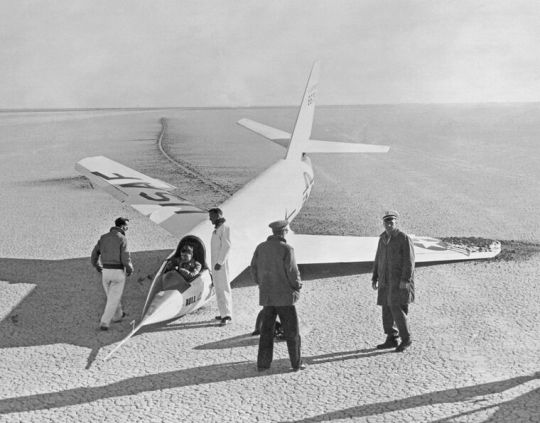
-Bell test pilot Jean Ziegler sits in the cockpit of the damaged X-2 #2 after the 1st rough landing. | Photo: NACA
X-2 number 2 was returned to Bell's factory in New York state afterwards, and the XLR-25 engine was installed. A captive carry flight over Lake Ontario on 12 May 1953 resulted in the loss of aircraft #2, Ziegler, and Frank Wolko from the B-50 crew. During a test of the liquid oxygen system, an explosion rocked the combined aircraft, jettisoning the Starburster, Ziegler and Wolko. The remains of the X-2 fell into Lake Ontario, and neither it, nor the bodies of the two men were recovered. The B-50 mother ship was able to return to the Bell facility, but was judged to be uneconomical to repair, and was scrapped. Similar explosions destroyed one of the X-1s, the X-1A and X-1D, and were eventually traced to Ulmer leather gaskets in the fuel system. The gaskets, treated with tricresyl phosphate (TCP), would react with liquid oxygen, making them explosive if sufficiently jarred. The Ulmer leather gaskets were replaced, and the explosions stopped.

-A Bell X-2 is loaded aboard the Boeing B-50A-5-BO Superfortress “mothership,” 46-011. | Photo: USAF
Modifications to the first X-2 and the engine delayed flights until 1955, with the first powered flight occurring on 18 November, reaching a speed of Mach 0.95. The test series began in earnest at this point, with the Starburster showing both its promise but also its limitations. On his final flight in July 1956, Lt. Col. Pete Everest was propelled to Mach 2.87, earning him (temporarily at least) the title of "Fastest Man Alive". Everest reported that the controls were only marginally effective at those speeds however, as the center of pressure for the aircraft changed at high speed, coupled with aeroelasticity of the empennage rendered the flight surfaces ineffective.

-Photo of the first X-2, showing shock diamonds in both exhaust plumes. | Photo: NACA
Testing continued however, with Captain Iven Kincheloe crossing 100,000 for the first time on 7 September 1956 and Captain Milburn Apt setting a new (unofficial) speed record of Mach 3.2. This mark came a grave cost however, as Apt, likely the victim of a lagging or miscalibrated instrument, attempted a banked turn above Mach 3, far in excess of what the X-2 could achieve. The aircraft tumbled out of control, with Apt unable to counter the control coupling, inertial roll coupling and supersonic spinning faced by the aircraft. Apt triggered the ejection of the nose, but was incapacitated by the forces he encountered, and was unable to release the canopy and free himself to activate his own parachute, and was killed when the capsule struck the lakebed. The nose-less X-2 continued on, eventually returning to Earth with little damage. A proposal was made to salvage the plane and modify it for hypersonic research, but was not funded, and the first X-2 was scrapped.

-Color photo of an X-2 still coupled to the B-50D mothership prior to launch. | Photo: USAF
LEGACY
The two X-2s completed 20 flights between 1952 and 1956, and although they set records in both altitude and speed, their contribution to the knowledge of high speed aerodynamics and heating was debatable. The unmanned X-7 and research variants of the Bomarc missile were capable of the same speeds, and the destruction of both X-2s meant that much of NACA's planned test program was left unflown. Manned exploration of hypersonic speeds and ultra-high altitudes would have to wait for the North American X-15, still several years off.
The X-2 was made a part of the 1956 film "Toward the Unknown", as the movie depicts several real and fictional test programs taking place at the USAF Flight Test Center at Edwards AFB. The climax of the movie depicts and accident roughly similar to Mel Apt's, although the pilot survives the crash.
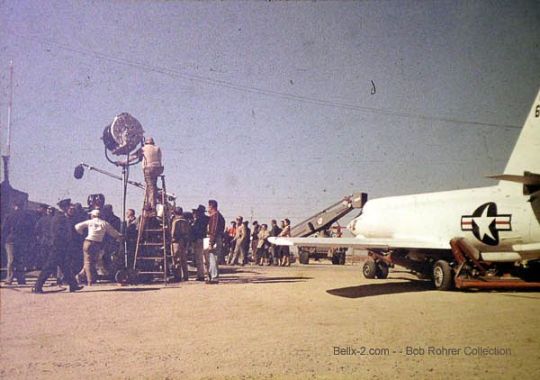
-Film crews surround the X-2 during filming for Toward the Unknown. | Photo: Bob Rohrer
The plane was later included in the pilot movie "Genesis" for the NBC series "Quantum Leap", in which the main character time travels into the body of a fictional pilot for the aircraft. A full-scale mockup of the X-2 was created for the show, and was later acquired by the Planes of Fame Museum in California. The prop is still in the museum's collection, though years of exposure have not been kind to the faux-X plane, which was not built to last in the first place.
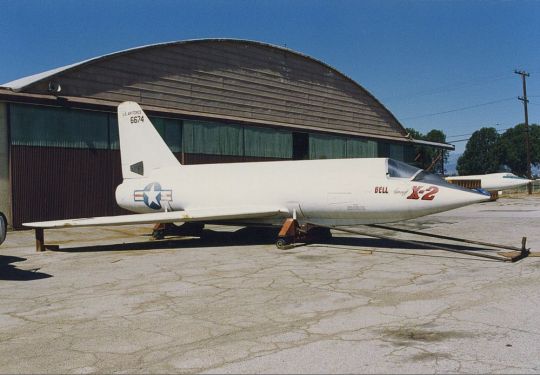
-Photo of the X-2 mockup at the Planes of Fame Museum in Chino, CA, some time in 1994. | Photo: Jon Goto
#aircraft#aviation#avgeek#airplanes#cold war#airplane#cold war history#coldwar#usaf#aviation history#naca#nasa#nasa history#edwards air force base#muroc dry lake#dryden flight research center#bell aircraft#x2#x 2#research aircraft#xplane#x plane
127 notes
·
View notes
Text

"The NASA 747 Shuttle Carrier Aircraft (SCA) lifts off the runway at Edwards AFB, California carrying the Space Shuttle Enterprise on its back."
Date: June 18, 1977
NARA: DF-ST-99-05367
#ALT-9#Captive-active flight 1A#Captive-active flight number 1A#Approach and Landing Tests#Space Shuttle#Space Shuttle Enterprise#Enterprise#OV-101#Orbiter#NASA#Space Shuttle Program#Boeing 747 Shuttle Carrier Aircraft#Boeing 747 SCA#Boeing 747#747#Shuttle Carrier Aircraft#Dryden Flight Research Center#Edwards Air Force Base#California#June#1977#my post
60 notes
·
View notes
Text

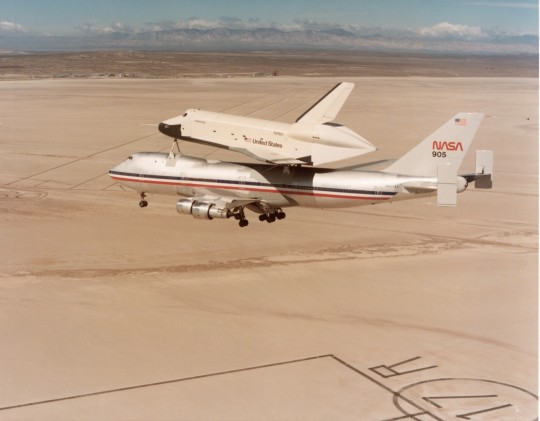
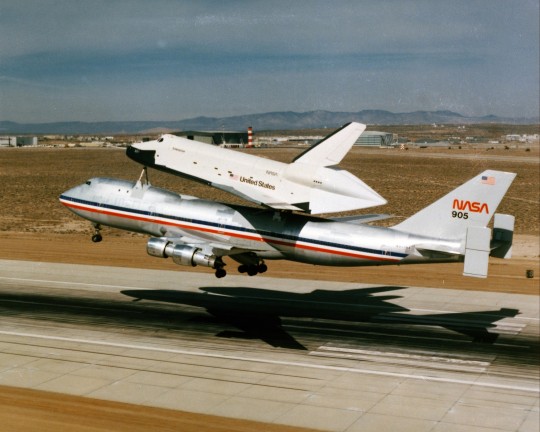
Space Shuttle Enterprise on top of the 747 Shuttle Carrier Aircraft, NASA 905, as they land at the Dryden Flight Research Center, Edwards Air Force Base in Kern County, California following the first captive-active flight of the Approach and Landing Tests (ALT-9).
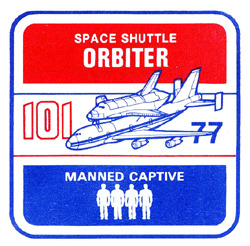
Commemorative stamp from Rockwell International
Date: June 18, 1977
NASA ID: ECN 6828, C-1977-2303
source
#ALT-9#Captive-active flight 1A#Captive-active flight number 1A#Approach and Landing Tests#Space Shuttle#Space Shuttle Enterprise#Enterprise#OV-101#Orbiter#NASA#Space Shuttle Program#Boeing 747 Shuttle Carrier Aircraft#Boeing 747 SCA#Boeing 747#747#Shuttle Carrier Aircraft#landing#Dryden Flight Research Center#Edwards Air Force Base#California#June#1977#my post
189 notes
·
View notes
Text

ALT-9 flight crew standing on a cherry picker prior to entry into Space Shuttle Enterprise. This was the first of three captive-active flights, which means the shuttle was manned during this phase.
"The captive-active flights were intended to determine the optimum profile required for Enterprise to separate from the SCA during the orbiter's free-flights. These were also intended to refine and test the orbiter crew procedures and to ensure the operational readiness of the orbiter's systems. For these three flights, although Enterprise remained mated to the SCA, it was powered and crewed."
-information from Wikipedia: link
Date: June 18, 1977
NASA ID: EC77-7581
#ALT-9#Captive-active flight 1A#Captive-active flight number 1A#Approach and Landing Tests#Space Shuttle#Space Shuttle Enterprise#Enterprise#OV-101#Orbiter#NASA#Space Shuttle Program#Boeing 747 Shuttle Carrier Aircraft#Boeing 747 SCA#Boeing 747#747#Shuttle Carrier Aircraft#Dryden Flight Research Center#Edwards Air Force Base#California#June#1977#my post
30 notes
·
View notes
Text

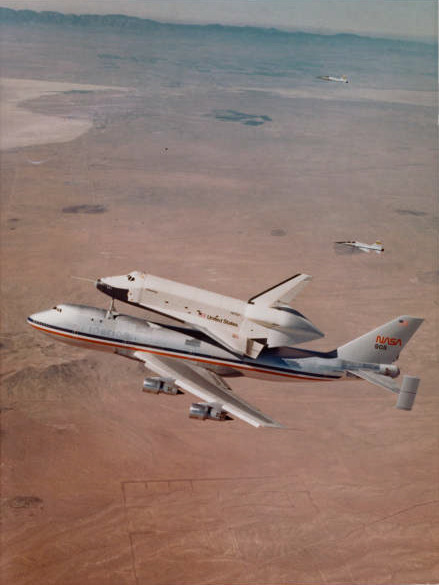

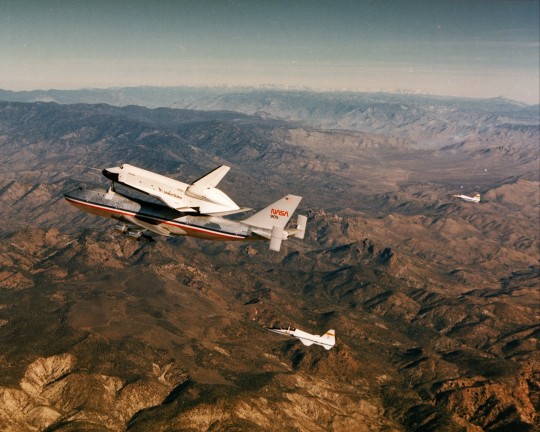

Space Shuttle Enterprise rides piggyback atop the 747 Shuttle Carrier Aircraft, NASA 905, flies over the desert and mountains of southern California during the first captive-active flight of the Shuttle Approach and Landing Tests (ALT-9) from Dryden Flight Research Center at Edwards Air Force Base in Kern County, California.
Date: June 18, 1977
NASA ID: S77-26776, C-1977-2305, EC77-7584, C-1977-2304, C-1977-2306
#ALT-9#Captive-active flight 1A#Captive-active flight number 1A#Approach and Landing Tests#Space Shuttle#Space Shuttle Enterprise#Enterprise#OV-101#Orbiter#NASA#Space Shuttle Program#Boeing 747 Shuttle Carrier Aircraft#Boeing 747 SCA#Boeing 747#747#Shuttle Carrier Aircraft#June#1977#Northrop T-38 Talon#T-38#Chase Plane#Trainer Plane#my post
118 notes
·
View notes
Text
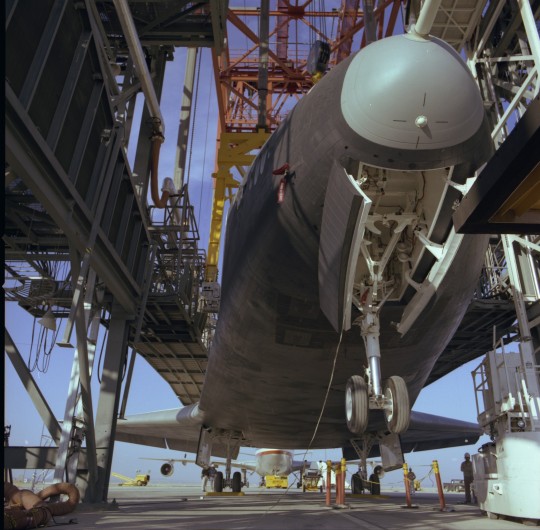
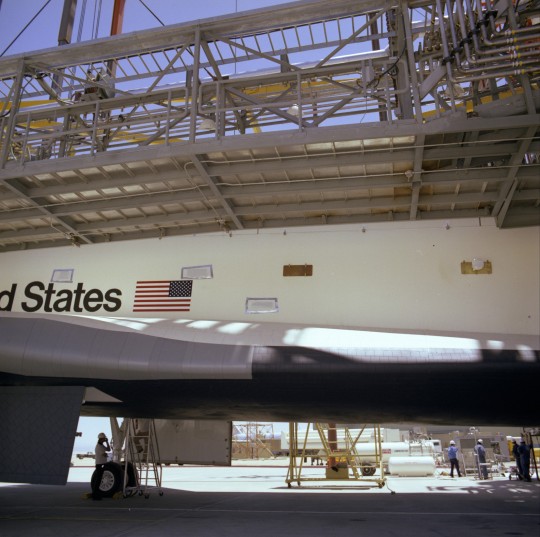
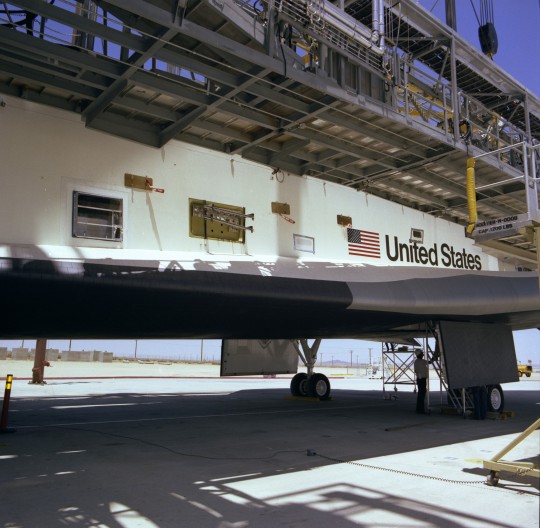

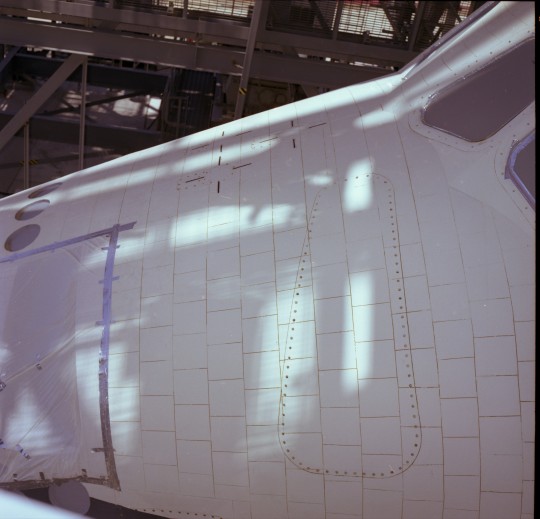
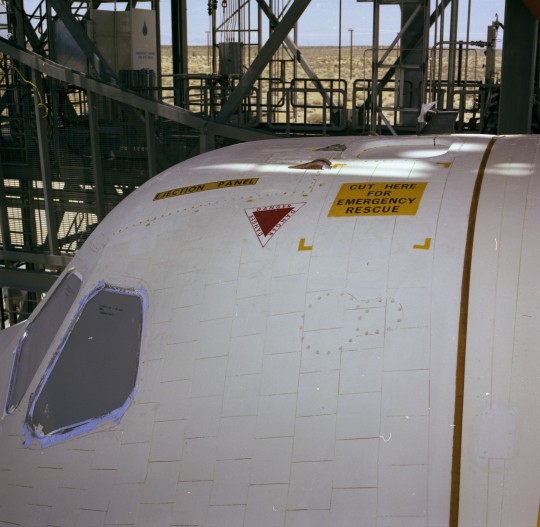
Space Shuttle Enterprise in the Mate-Demate Device (MDD) at Edwards Air Force Base, prior to mating to 747 for ALT-9, Captive-active flight #1A manned-captive flight.
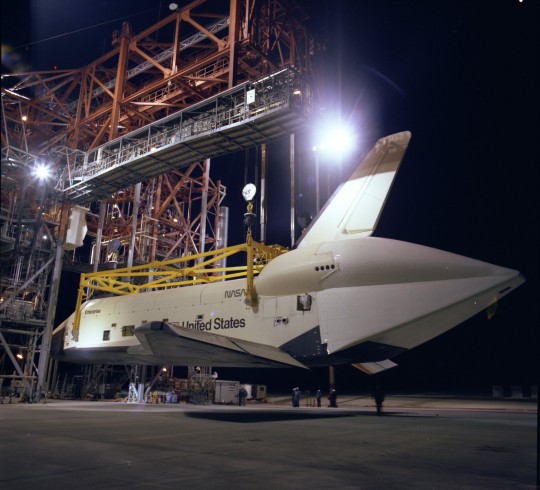
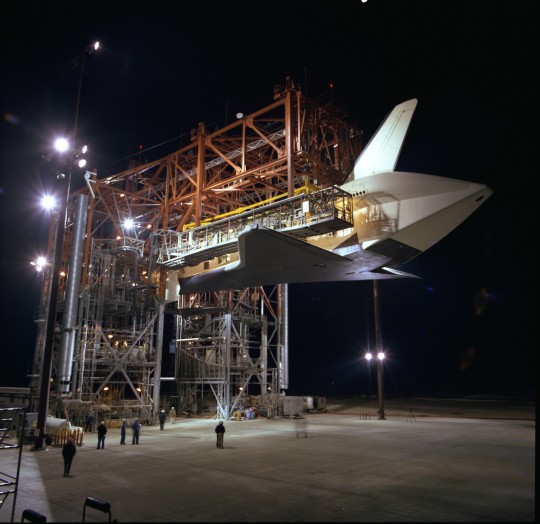
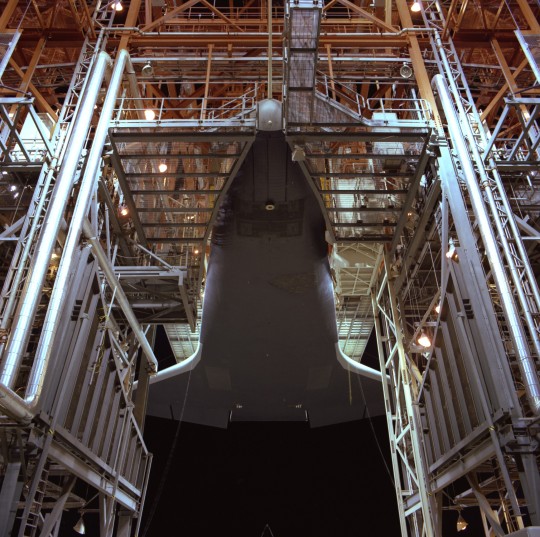
"HQ NASA News Release No. 77-116 stated on June 8, 1977:
“'The first manned test flight of the Space Shuttle orbiter has been rescheduled from June 9 to no earlier than June 16, 1977, at NASA’s Dryden Flight Research Center, Edwards, California. The exact date is dependent upon successful completion of orbiter ground tests currently underway at Dryden. This flight begins the second phase of the Shuttle Approach and Landing Tests, a program designed to verify the aerodynamics and flight control characteristics of the orbiter while still attached to the 747 carrier aircraft.

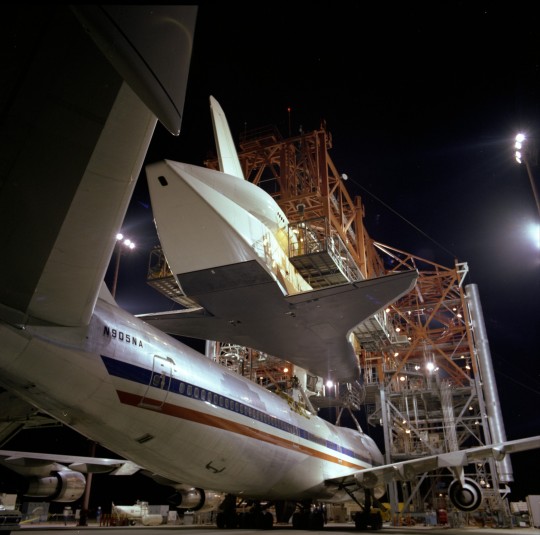
The postponement is due to the malfunction of equipment associated with the shuttle orbiter’s auxiliary power system. A leak developed in a fuel pump in one of the three Auxiliary Power Units causing a small amount of APU fuel (hydrazine) to vent overboard. This problem in the APU 2 developed during a mission run of the orbiter APU system, one of the final tests scheduled before the first manned flight. APU 2 will be replaced before another mission run is scheduled at Dryden. This work is expected to take between four and seven days.'”
source
Date: June 10-14, 1977
Shared by Karl Dodenhoff on the "ENTERPRISE Early Shuttle Development" Facebook group page.
NASA ID: EC77-7504, EC77-7416, EC77-7415, EC77-7471, EC77-7421, EC77-7420, EC77-7437, EC77-7441, EC77-7466, EC77-7467, EC77-7459
#ALT-9#Captive-active flight 1A#Captive-active flight number 1A#Approach and Landing Tests#Space Shuttle#Space Shuttle Enterprise#Enterprise#OV-101#Orbiter#NASA#Space Shuttle Program#Boeing 747 Shuttle Carrier Aircraft#Boeing 747 SCA#Boeing 747#747#Shuttle Carrier Aircraft#Mate-Demate Device#MDD#Dryden Flight Research Center#Edwards Air Force Base#California#June#1977#my post
89 notes
·
View notes
Text

Space Shuttle Enterprise, riding piggy back on the 747 SCA, landing from Edwards Air Force Base following the first manned flight of the Orbiter. Aboard Enterprise are Astronauts Fred C. Haise and Charles G. Fullerton.
Date: June 18, 1977
517285516
#ALT-9#Captive-active flight 1A#Captive-active flight number 1A#Approach and Landing Tests#Space Shuttle#Space Shuttle Enterprise#Enterprise#OV-101#Orbiter#NASA#Space Shuttle Program#Boeing 747 Shuttle Carrier Aircraft#Boeing 747 SCA#Boeing 747#747#Shuttle Carrier Aircraft#Dryden Flight Research Center#Edwards Air Force Base#California#June#1977#my post
61 notes
·
View notes
Text

Enterprise and 747 in the Mate-Demate Device at Edwards Air Force Base.
"Deke Slayton set a date of June 17, but that day brought three new problems: failure of an Inertial Measurement Unit, trouble with two of the four primary flight control computers, and a fault with the ejection seats. These were fixed the following day, June 18, 1977, allowing Haise and Fullerton to board the orbiter as it rested atop its carrier. Most of Enterprise’s onboard systems were operating, including two of three APUs and ammonia boilers in an active thermal control system."
Date: June 14-17, 1977
NARA: 12042751
source
#ALT-9#Captive-active flight 1A#Captive-active flight number 1A#Approach and Landing Tests#Space Shuttle#Space Shuttle Enterprise#Enterprise#OV-101#Orbiter#NASA#Space Shuttle Program#Boeing 747 Shuttle Carrier Aircraft#Boeing 747 SCA#Boeing 747#747#Shuttle Carrier Aircraft#Mate-Demate Device#MDD#Dryden Flight Research Center#Edwards Air Force Base#California#June#1977#my post
54 notes
·
View notes